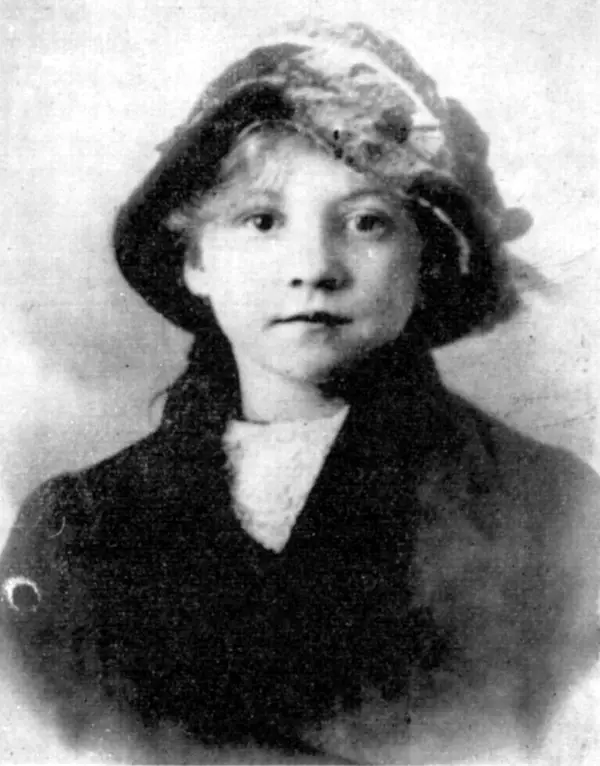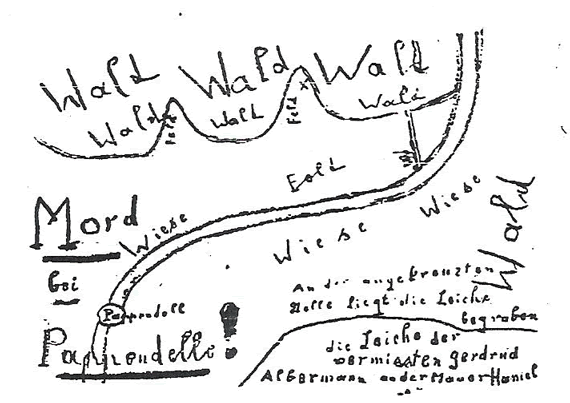Our blog posts may include affiliate links. These affiliate links don't cost you anything, but we might earn a few Euros if you decide to purchase something from one of our recommended website partners. Thank you for your support to help keep this platform up and running!
I suppose every city has its infamous past. Duplicitous characters have left their dark mark and tainted the cities we all love. Victims of serial killers still haunt the streets we walk on today. As every story has a villain, every city has its monster. Jack the Ripper still characterizes London’s East End, while Jeffrey Dahmer’s terrors still live on in Milwaukee; where his brutalities were finally uncovered. But who is Düsseldorf’s monster? Is it possible that Düsseldorf, the place so many of us call home, has its very own villain? Its very own Vampire of Düsseldorf.
Post Sections
The Beginning of The End
She arrived at Düsseldorf train station, scared, homeless, and unemployed. Leaving Cologne on an evening that seemed colder than usual, she hoped to meet Ms. Brückne who would provide her with a safe place to stay. A new start, a new city. But when she arrived, the friendly face of Ms. Brückne was replaced by a strange man. He offered her a room and shelter. And in her state of desperation, she felt she had no choice. As they made their way to the Volksgarten, the night seemed to get colder, as a mist of uncertainty and fear clouded her evening.
Dark and isolated, the stranger insisted they go through the wooded and concealed park. But she refused. With his continued insistence and harassment, she feared what would come next. In her state of terror, Peter Kürten, who had witnessed the scene was quick to intervene, sending the strange man away. She was relieved and grateful. She thought she was safe.
On May 14, 1930, Maria Budlies came face to face with the Vampire of Düsseldorf. Peter Kürten.
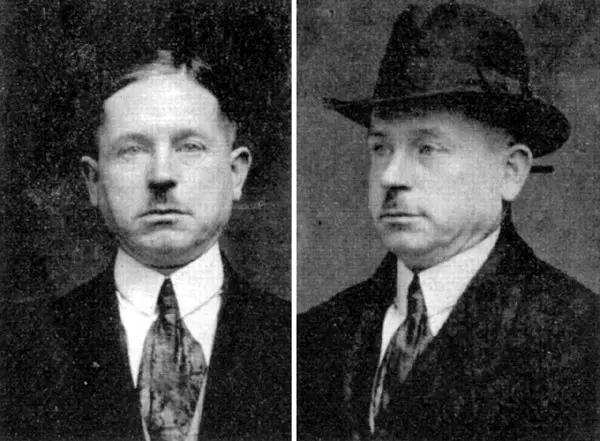
Police photo, German Reich (‘Weimar Republic’), Public domain
This was his gift, the ability to charm and convince others that there was no reason to fear him. Hiding behind normalcy, kindness, and plainness, Peter was one of the most gruesome killers of the 20th century; the Weimar Republic’s most notorious criminal case.
The Beginning
Peter Kürten was born on May 26, 1883, in Mülheim, Cologne. His family moved to Düsseldorf in 1893. Peter was 1 of 13 siblings and like most serial killers, his childhood branded him with hatred and cruelty that would follow him into adulthood. Kürten only knew poverty and violence growing up. With a father who was an abusive alcoholic and a mother who lacked love and attachment, Peter knew few joys in his life.
“I never loved my father, but I always feared him. […] I got to know my father as a monster from an early age”
His neighbor, a dog catcher, and torturer. His father, abusive. His need for love and attention in a family so large. And his parents’ loveless and cruel marriage meant that Peter’s journey to becoming a monster began early. Never finding his joy at home, he found it in the killing and terrorizing of animals. Peter was even assumed to have committed his first murder at the age of 9. He was a key suspect in the drowning of two of his playmates in the Rhine; however, with little proof and his young age, it is still unclear if he was the true perpetrator. Peter’s life was continuously filled with felonies, lawlessness, and brutality; becoming a habitual criminal early on and spending almost half his life behind bars.
The Middle
After attending elementary school in Gerresheim until 1897 he began an apprenticeship as a sand molder. He found himself, yet again, in an environment that would anger him and even further ignite the evil within. Still, a believer in corporal punishment, his apprenticeship was met with berating and abuse. Here he would commit his first crime. Peter embezzled wage money and quickly ran away. But his return would land him in prison for the first of many stays.
Between 1899 and 1918 Peter would be charged with multiple thefts, acts of violence, and even desertion. He spent all 19 of those years in and out of prison. From petty theft to burglary to arson to a revolver shooting, Peter tried it all and appeared to relish the life of crime. Until the brutalities and humiliations of prison life finally caught up with him.
Between 1921 and 1925 Peter lived in Altenberg for four years. Miraculously, he spent these years without getting into any trouble with the law. These would be the most peaceful and ordinary years of his life. He even met and married Auguste Scharf. But was it possible? Could this criminal, murderer, and sadist have found love? Well, it would appear, that love, it certainly was not.
“On May 12, 1921, I first met my current husband. I didn’t like him from the start…”
Auguste
She was born Auguste Scharf on February 20, 1880, in Wilków, Poland. Auguste moved to Berlin in 1896, where she worked as a housemaid, and later moved to Leipzig in 1897 to live with her brother.
It was here that Auguste would be imprisoned for her own murderous crime. In 1903 she met a horticultural technician. He promised her marriage, but after more than 7 years, according to Auguste, the promise was broken. His parents did not approve and even lawyers were involved to settle the controversy with money. Well, that was not good enough for Auguste.
She stalked her once lover at his home and shot him dead. Equally heinous but less gruesome than her husband’s murders to come. Auguste was fuelled by hate, disappointment, and disloyalty. She was sentenced to five years in prison in 1911 but was released early in 1915.
“I have never noticed anything about my husband that would have pointed to a murder, here in Düsseldorf any more than in Altenburg.”
After spending time with her sister in Leipzig she took over a branch of a chocolate factory in Altenburg where she would meet Peter Kürten in 1921. Auguste never fell victim to Peter’s crimes. Perhaps he had respect for her after she admitted to her murderous past while Peter, on the other hand, did not admit to his previous indiscretions.
Peter Kürten seems to have been a good, honest, and loving husband. Stating that he never had any violent thoughts toward his wife. Peter was not only able to avoid all suspicion from his wife but from his neighbors, colleagues, and police too.
A Murder Most Foul
Beneath his years of misdemeanors, petty thefts, and multiple criminal activities, he hid his first murder. With no job or income to his name, Peter made a living by stealing. It was in his native town of Mülheim in the summer of 1913 that Peter’s passion for murder would be kindled. With the hopes of finding valuables and money, he targeted Klein Inn and broke into the Innkeeper’s apartment.
But Peter was unsuccessful. No money or valuables were discovered. Instead, the innkeeper’s 10-year-old daughter, Christine Klein, was found sleeping. Our villain choked Christine, who resisted powerfully. She was defeated and killed with four stabs in the neck. He used his pocket knife to murder little Christine. According to Peter, the murder lasted less than three minutes and he was fascinated by “hearing the blood rush”. The murder remained unsolved. Justice for Christine would only be served in Peter’s confession 17 years after her tragic death. What if Peter were to find those valuables? Would Christine have lived out her life as was intended?
The Vampire of Düsseldorf Series
“A vampire is someone who looks human and sounds human but is not human.” Peter’s acts of 1929 would make his mark as one of Germany’s most notorious villains. Returning to Düsseldorf with his wife, Auguste, after his seemingly quieter life in Altenberg, would see his most heinous crimes committed. What happened? What triggered his blood hunt and rapture for murder? Was it boredom? His need for recognition?
“[…] the old suffering started up again here, just as if everything had been enchanted here, so to a certain extent I was pursued by misfortune.”
On February 3, 1929, Peter Kürten’s sinister and egregious series of murders and crimes began. Apollonia Kühn, 55 years old was on her way home to her apartment on Bertastrasse. Around 9 p.m., taking advantage of the dark and a nearby empty field, Peter attacked Apollonia with a pair of scissors. He repeatedly stabbed her from her face to her arms, hands, and back of the head. After blood-curdling screams, Peter let her go and ran away. She was left with 18 stitches and a lifetime of trauma. Apollonia survived.
On February 8, 1929, 9-year-old Rosa Ohlinger, was lost. At around 6 p.m. on Behrensstrasse, Rosa thought she would be safe as a kind gentleman offered to take her home. Peter stabbed Rosa 13 times using scissors once again, this weapon had now become his modus operandi. Rosa was murdered and her body was found against a wooden fence on the east side of St. Vinzenzkirche. Peter would continue to return to the scenes of his crimes to savor and appreciate his actions.
The Düsseldorf public, shocked, did not know that this killing was just the beginning of an unprecedented series of murders.
February 13, 1929, only four days after Rosa Ohliger’s body was found, Peter would strike again. With his weapon of choice, Peter stabbed and killed 53-year-old, Rudolf Scheer from behind.
After the eventful month of February, Kürten did not commit any further murders and he remained inactive until August 1929.
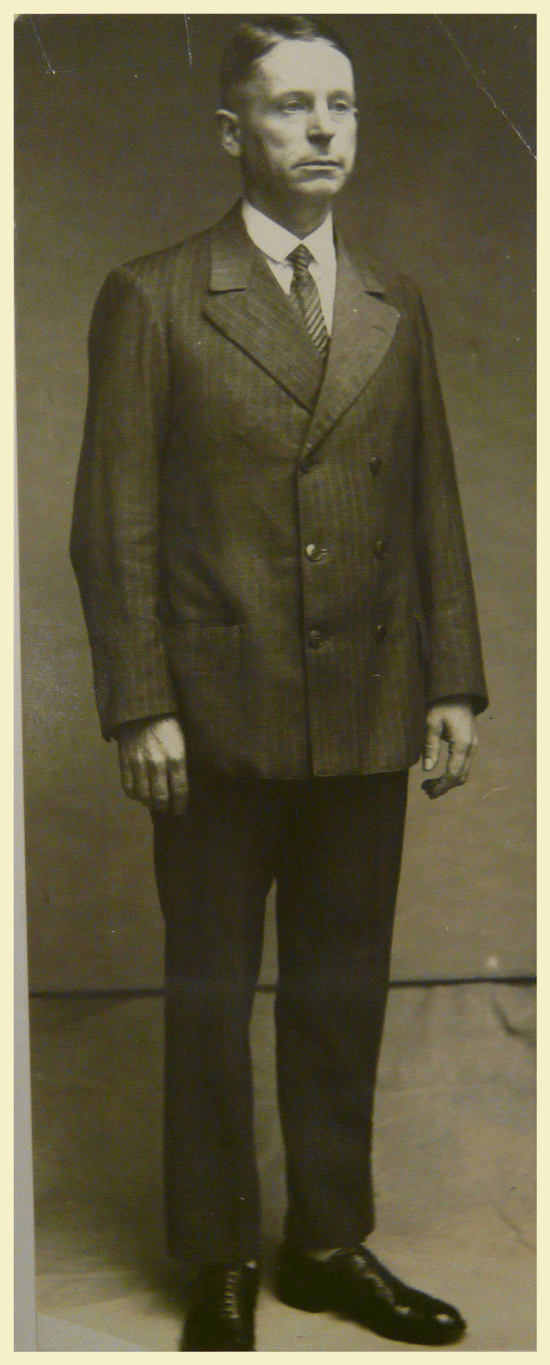
Signature in the Federal Archives: picture 102-01686 Photo: The Federal Archives /Georg Pahl
On August 8, 1929, Peter met the domestic worker Maria Hahn at Hansaplatz. After spending time talking, Maria felt safe making plans for the following Sunday. On Sunday, August 11, they met again and traveled to the Neandertal to spend the day hiking and stopping at several restaurants along the way. It would appear to be a perfect summer date. After walking further into the forest Peter stabbed Maria three times in the temple, ten times in the chest, and seven times in the neck. It was here that the true vampire was awakened. Peter later admitted to drinking Maria’s leaking blood and quickly vomiting it up again. Maria’s body would only be discovered in November.
“I had first wounded the rooster in the neck. From this injury, I took blood from the rooster, larger amounts.”
On the evening of Saturday, August 24, 5-year-old Gertrud Hamacher and her 14-year-old foster sister, Luise Lenzen, disappeared. Peter would murder both with violent suffocation and cuts to the throat. These were the first murder cases that would gravely alarm Düsseldorf’s public.
On September 30, 1929, power workers found a female body on the Rhine meadows. Ida Reuter fell victim to Peter’s charms. After dinner and a stroll, Ida was raped and suffered multiple blows to the head. Peter found a new weapon, a hammer.
2 weeks after Ida met her fate, on October 11, 1929, Peter took his hammer to the movie theaters on Graf-Adolf-Strasse. Here he met 22-year-old Elisabeth Dörrier. She had been struck eight times with Peter’s new-found weapon. After following a trail of blood the following day, Elisabeth was found seriously injured. She later died without having ever regained consciousness.
On November 7, 1929, Kürten’s scissors would find another victim. At the Flingern church, Peter met 5-year-old Gertrud Albermann. Gertrud, innocent and trusting, took a walk with Peter. In the allotment gardens near the Haniel & Lueg factory, Gertrud was stabbed 34 times and Peter would attempt to drink the blood of his victim once again. Her mutilated body would be found 2 days later.
Maria Hahn’s body was yet to be discovered. Peter, although remaining within the shadows was unsatisfied that a murder by his hand had still not been unearthed. Eager to witness the authorities scramble in fear of another murder he sent multiple sketches and letters to both the police and newspapers, pinpointing the exact location of Maria. Her body was finally recovered on November 15, 1929.
Children, women, and men were not the only ones to fall victim to Peter. On the night of December 7, 1929, Kürten sliced the neck of a swan in the Hofgarten. He would take a drink of the animal’s blood. This would be our vampire’s final sip.
Throughout these events, Peter would attempt multiple failed murders, arson, and rape. No one was able to identify the seemingly gentle and kind Peter Kürten.
The End
The Vampire of Düsseldorf had become infamous and the Düsseldorf public lived in fear and anger. Police had no genuine suspect and a murderer on the loose. But after the murder of Gertrud Albermann and the discovery of Maria Hahn’s body, Wilhelm Hofer – a previous cellmate of Peter – would bring the suspect forward.
However, it was Maria Budlies that would be the cause of Peter’s capture. After Maria believed she had met her knight in shining armor, she willingly followed him to his apartment; Mettmanner Strasse 71.
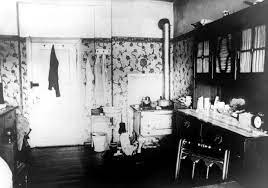
Peter’s apartment. Creator: Peter Ulbrich. Copyright: picture-alliance/dpa
Starting to feel uncomfortable Maria insisted that Peter take her to a women’s hostel. But instead, he led them into the Grafenberg forest, where Maria was choked and sexually harassed. But she was left alive and unharmed. Maria wrote a letter to her friend, Mrs. Brückner, in which she described what had happened; suspecting that she had just encountered the Vampire of Düsseldorf. Maria’s first night in the city would set the foundation for Peter’s demise.
The letter was mistakenly delivered to the Brügmann family, who quickly handed it to the police. Following the evidence, the police asked Maria to confirm Peter’s apartment. However, Peter caught Maria investigating his apartment block a few days prior. He admitted his actions to his wife Auguste and moved out to avoid capture.
Having just missed Peter at his apartment, the police had made a mistake. Peter knew they were on his trail. They sent a summons to confirm this, giving Peter a reason to flee. Peter and Auguste agreed to meet at Rochuskirche one last time. However, the police intercepted after getting an admission from Auguste of Peter’s movements.
I Was Born In Cologne I Will Die In Cologne Too
On May 24, 1930, Kürten was arrested at the planned meeting spot of Rochuskirche. He didn’t resist and even proudly made a confession.
Preliminary investigations began. Peter would initially revoke his confession but after confronting other witnesses, finding hidden objects belonging to the murdered girls, and finding some of the murder weapons, he had no choice but to fully confess to all crimes in August 1930.
Peter revealed the whereabouts of four other hammers he had bought in hopes of rendering other victims unconscious with a single blow to the temple. The investigators were also able to prove that the letters and sketches received had clearly been written by Kürten.
Through the collection of evidence, a list of victims that surpassed 30, and a psychiatric analysis, his inhumanity, and savagery were undeniable. On April 22, 1931, the Düsseldorf jury sentenced him to death for nine cases of murder, and 15 years in prison for seven other attempted murders.
An average-looking man of average height, with neatly combed dark hair, would enter the execution courtyard on July 2, 1931. Peter was beheaded in Klingelputz Prison in Cologne.
“The overall picture that the trial gave of the crimes and the perpetrator’s personality showed such abysmal depravity, such a dangerous nature of the perpetrator, and such a large number of victims that we can only hope that such a case may never be repeated. If ever a lust murderer deserved the death penalty, it is Peter Kürten.”
Peter could be considered one of the worst serial killers of our time and yet little know about his victims and actions. His story would be depicted in films and music but with much less recognition and popularity than we see this genre collect today. A few months after Peter’s execution, Germany would witness an equally brutal and sadistic man come into power; this would vastly overshadow Peter’s atrocities.
How do you feel knowing that you could be walking in the steps of one of Peter’s victims? Or worse yet, walking in the steps of the perpetrator himself?
New to Germany? Join our Welcome Program! Want to join our author team? Send us an email! Join our Life in Düsseldorf | Expats & Locals Community group and register for our newsletter (packed with the hottest events, seasonal activities, upcoming job opportunities and more)!


